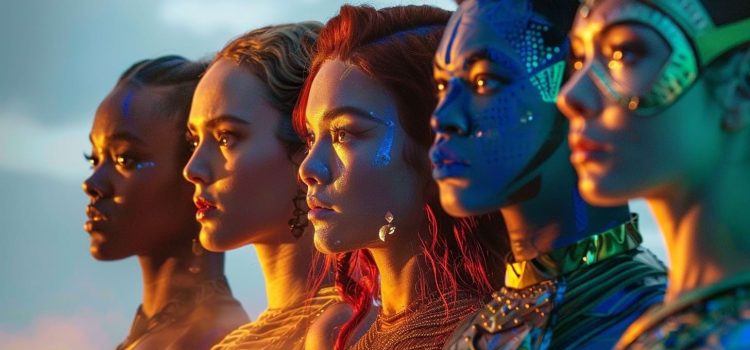
Introduction
The landscape of modern cinema has undergone significant transformation over the past few decades. One of the most notable changes has been the increasing emphasis on diversity. This shift reflects broader societal movements toward inclusivity and representation, and it is reshaping the way stories are told on the big screen. However, while progress has been made, numerous challenges remain. This article explores the role of diversity in modern cinema, examining both the strides forward and the obstacles that still need to be overcome.
The Importance of Diversity in Cinema

Diversity in cinema is crucial for several reasons. Firstly, it allows for a more accurate representation of the world we live in. Movies have a profound impact on culture and society, often shaping perceptions and attitudes. When cinema fails to reflect the diversity of its audience, it can perpetuate stereotypes and reinforce social inequalities.
Secondly, diverse representation can lead to richer storytelling. Different backgrounds bring unique perspectives, experiences, and narratives that can enrich the cinematic landscape. By including a variety of voices, modern cinema can explore a wider range of themes and emotions, making for more compelling and relatable content.
Progress in Diversity

-
Representation in Front of the Camera
One of the most visible areas of progress has been the increased representation of different races, ethnicities, genders, and sexual orientations in leading roles. Films like “Black Panther,” “Crazy Rich Asians,” and “Moonlight” have broken new ground by featuring predominantly non-white casts and exploring stories centered on marginalized communities.
-
Behind the Camera
Diversity behind the camera is equally important. Directors, writers, and producers from diverse backgrounds can bring fresh perspectives to filmmaking. Initiatives like the Academy Aperture 2025 and various diversity programs in film schools are aimed at increasing opportunities for underrepresented groups in the industry.
-
Awards and Recognition
The recognition of diverse talent through prestigious awards has also seen improvement. The Oscars, for instance, have faced criticism for their lack of diversity but have made strides in recent years. Films like “Parasite,” which won Best Picture in 2020, and “Nomad land,” directed by Chloé Zhao, who won Best Director in 2021, are examples of this progress.
Challenges in Achieving True Diversity

Despite these advancements, the journey toward true diversity in modern cinema is far from complete. Several challenges persist.
-
Tokenism
One of the significant issues is tokenism, where diversity is included superficially rather than meaningfully. This can manifest as casting a single character from a marginalized group without giving them a substantial role or story arc. Tokenism can be a way for studios to appear inclusive without making genuine efforts toward diversity.
-
Stereotyping
Even when diverse characters are included, they are often portrayed through stereotypes. This can reinforce harmful misconceptions and fail to provide a nuanced portrayal of different communities. For example, LGBTQ+ characters have historically been depicted as villains or comic relief rather than well-rounded individuals.
-
Lack of Opportunities
There is still a significant disparity in opportunities for underrepresented groups in the film industry. Women, people of color, and LGBTQ+ individuals often face more barriers to entry and advancement in Hollywood. This can be due to systemic biases, fewer networking opportunities, and a lack of mentorship.
-
Box Office and Marketability
Studios often cite concerns about box office performance and marketability as reasons for not investing in diverse films. There is a perception that movies with diverse casts or unconventional stories may not perform well financially. However, the success of films like “Black Panther” and “Crazy Rich Asians” challenges this notion and demonstrates that audiences are hungry for diverse content.
The Way Forward

-
Education and Training
One of the most effective ways to promote diversity in cinema is through education and training. Film schools and workshops can play a crucial role in nurturing talent from underrepresented communities. Providing scholarships, mentorship programs, and networking opportunities can help level the playing field.
-
Industry Initiatives
The film industry itself can take proactive steps to promote diversity. This can include setting diversity quotas, creating more inclusive hiring practices, and supporting independent films by diverse filmmakers. Industry organizations and unions can also advocate for policy changes that promote inclusivity.
-
Audience Support
Audiences have a significant role to play in supporting diversity in cinema. By choosing to watch and promote films that feature diverse casts and stories, viewers can send a strong message to studios about the demand for inclusive content. Social media campaigns and grassroots movements can also raise awareness and advocate for change.
-
Continuous Dialogue
Finally, continuous dialogue about diversity in cinema is essential. This includes not only celebrating successes but also critically examining failures and areas for improvement. Open conversations can lead to greater awareness and understanding, fostering a more inclusive industry.
Conclusion
Diversity in modern cinema is not just a trend; it is a necessary evolution that reflects the changing dynamics of our society. While significant progress has been made, there is still much work to be done to achieve true inclusivity. By addressing the challenges and continuing to push for meaningful representation, the film industry can create a richer, more diverse cinematic landscape that resonates with audiences worldwide.









